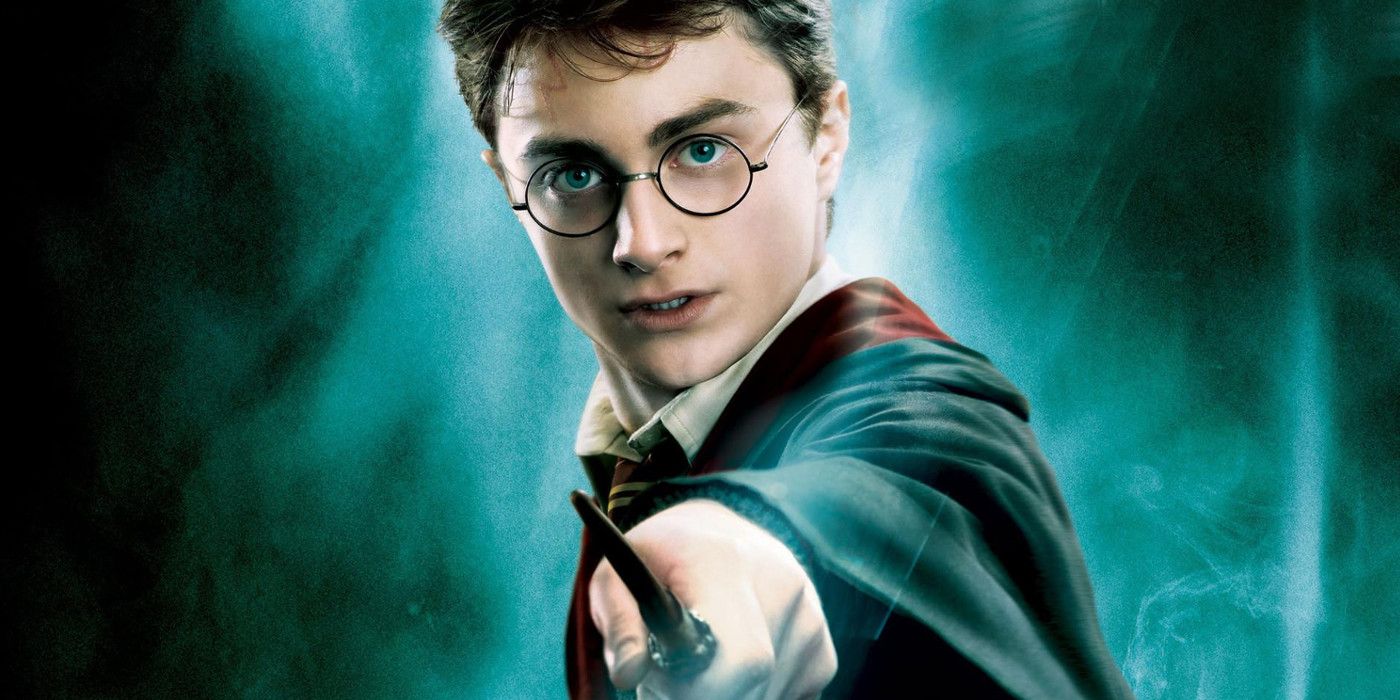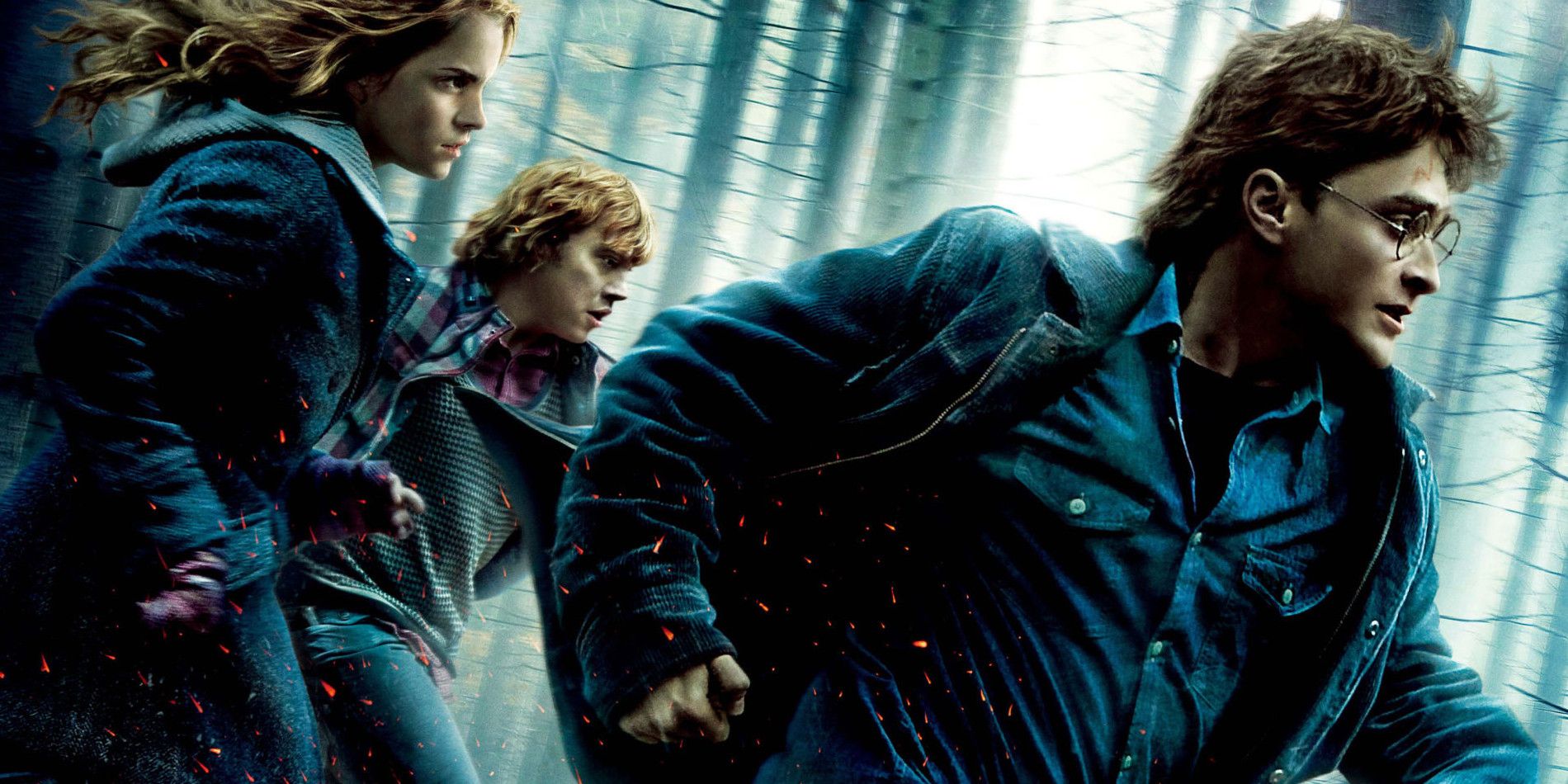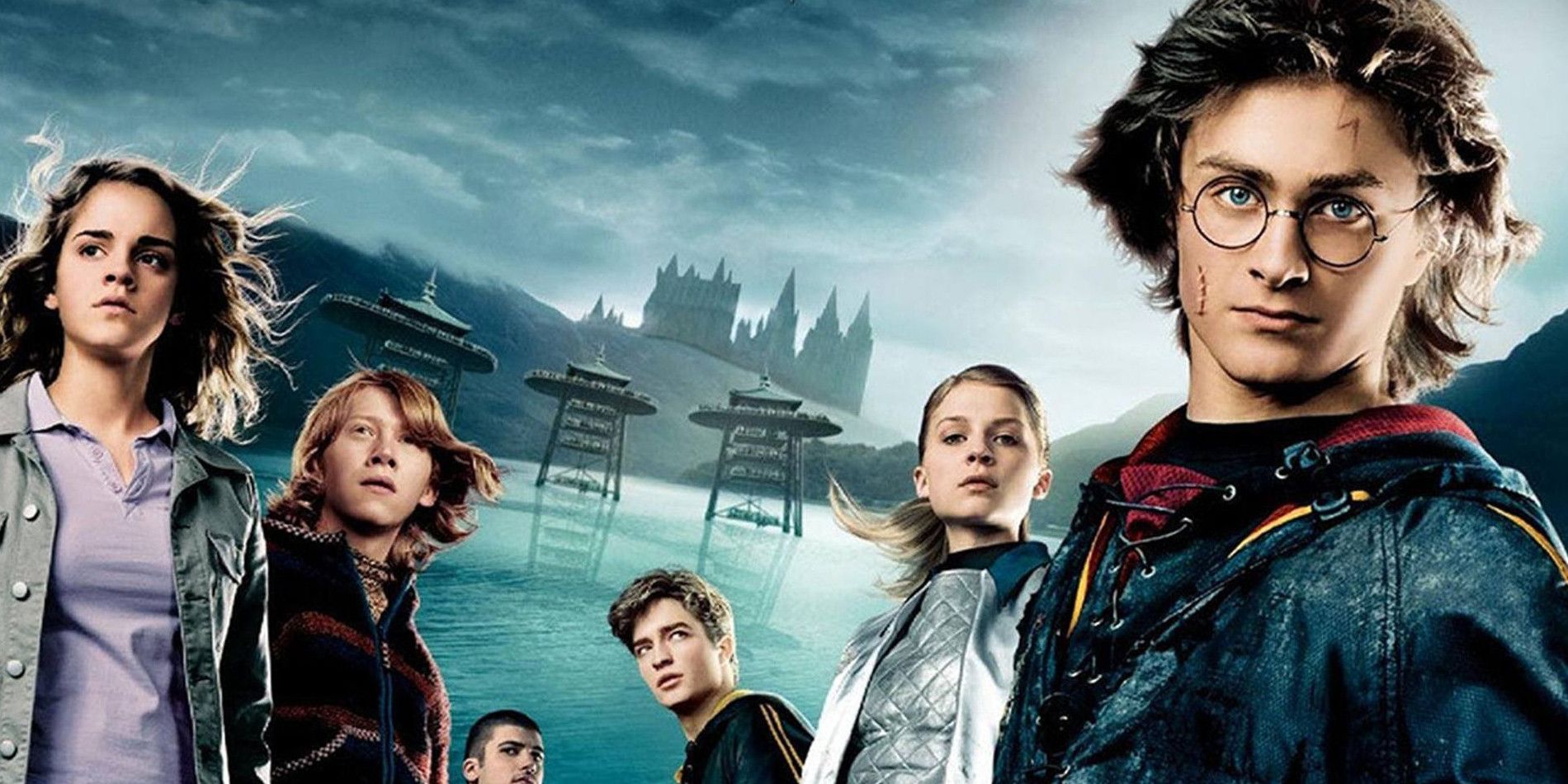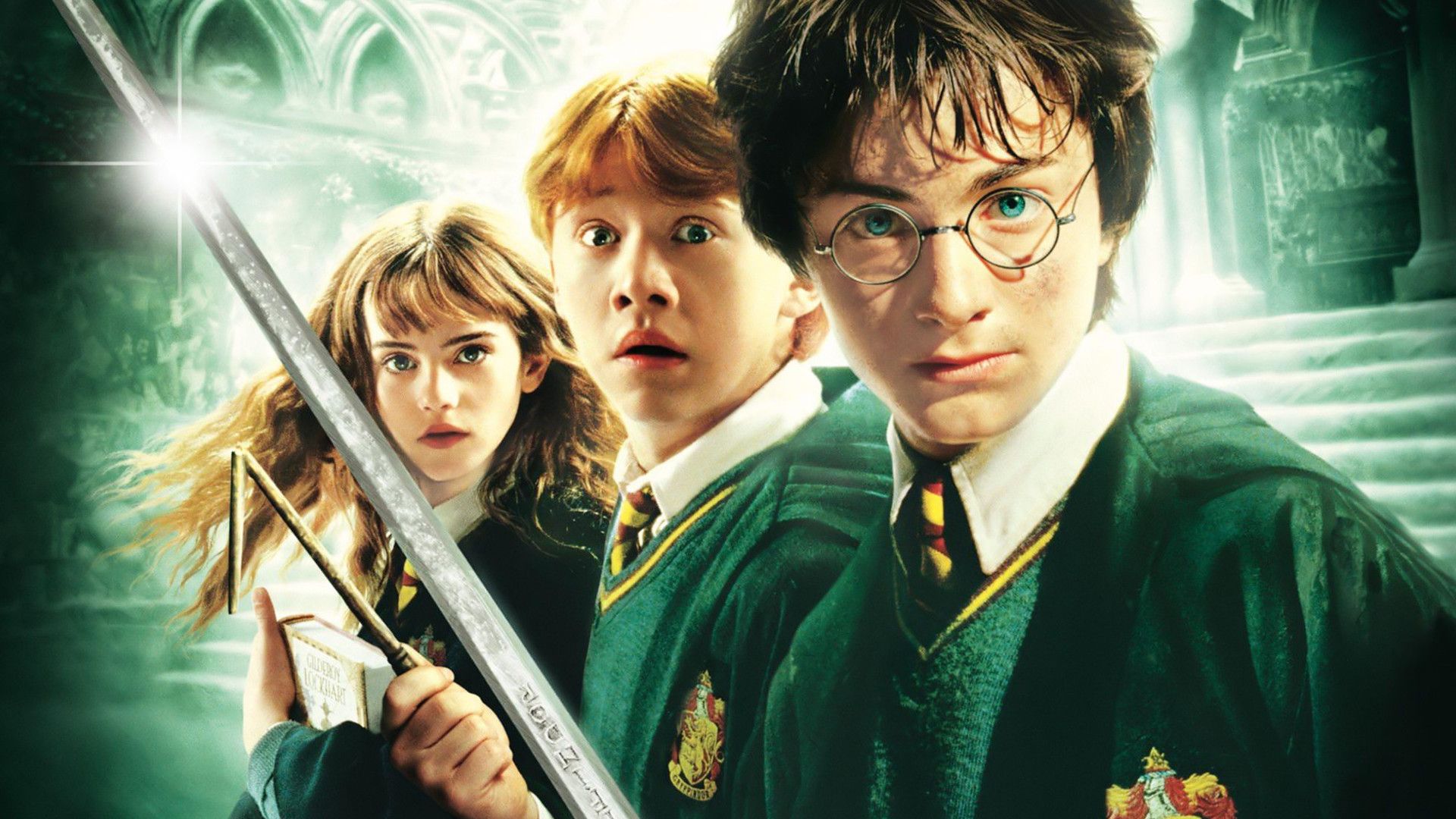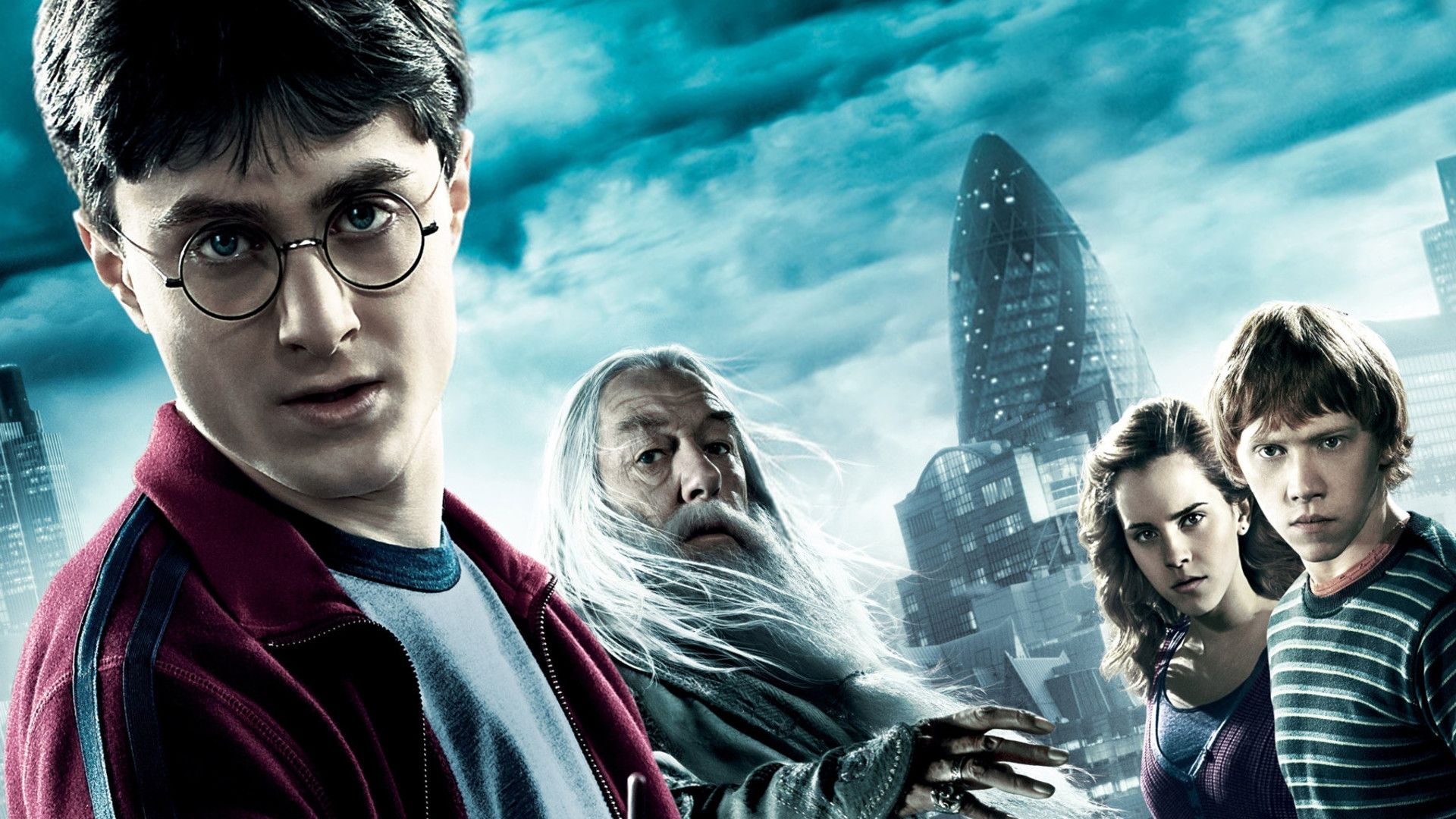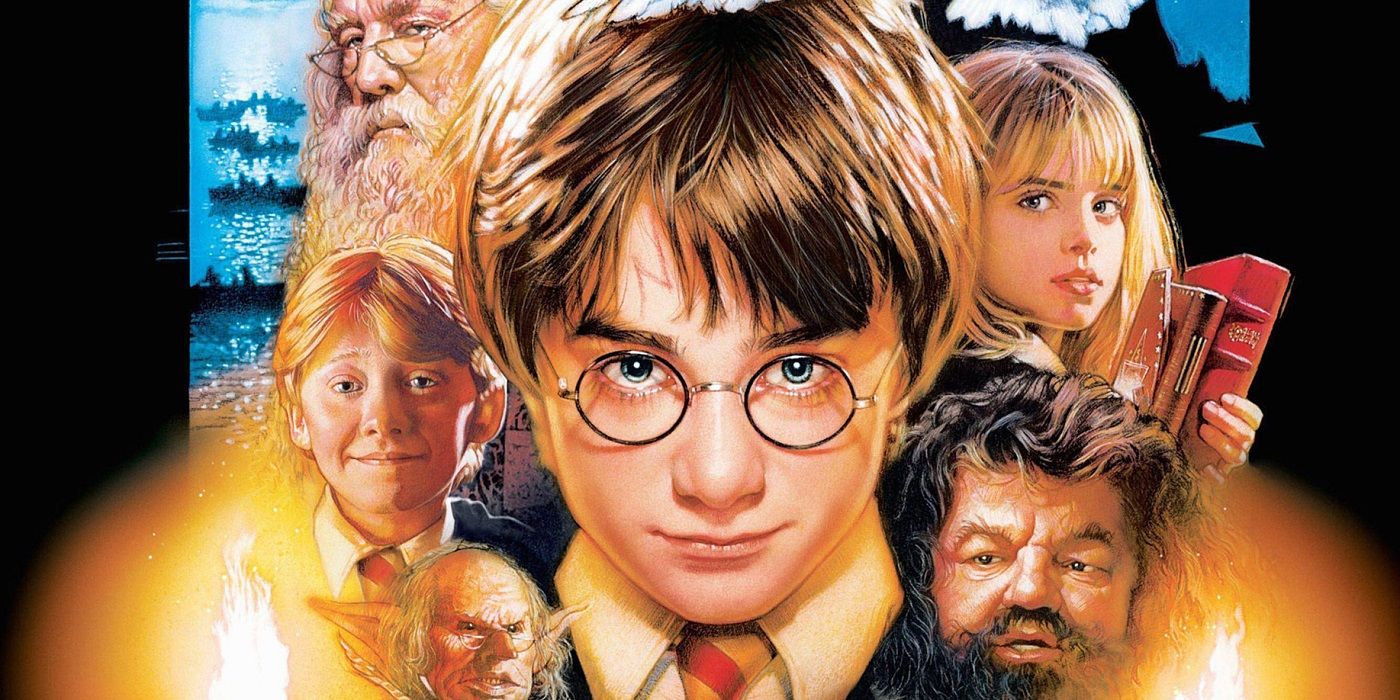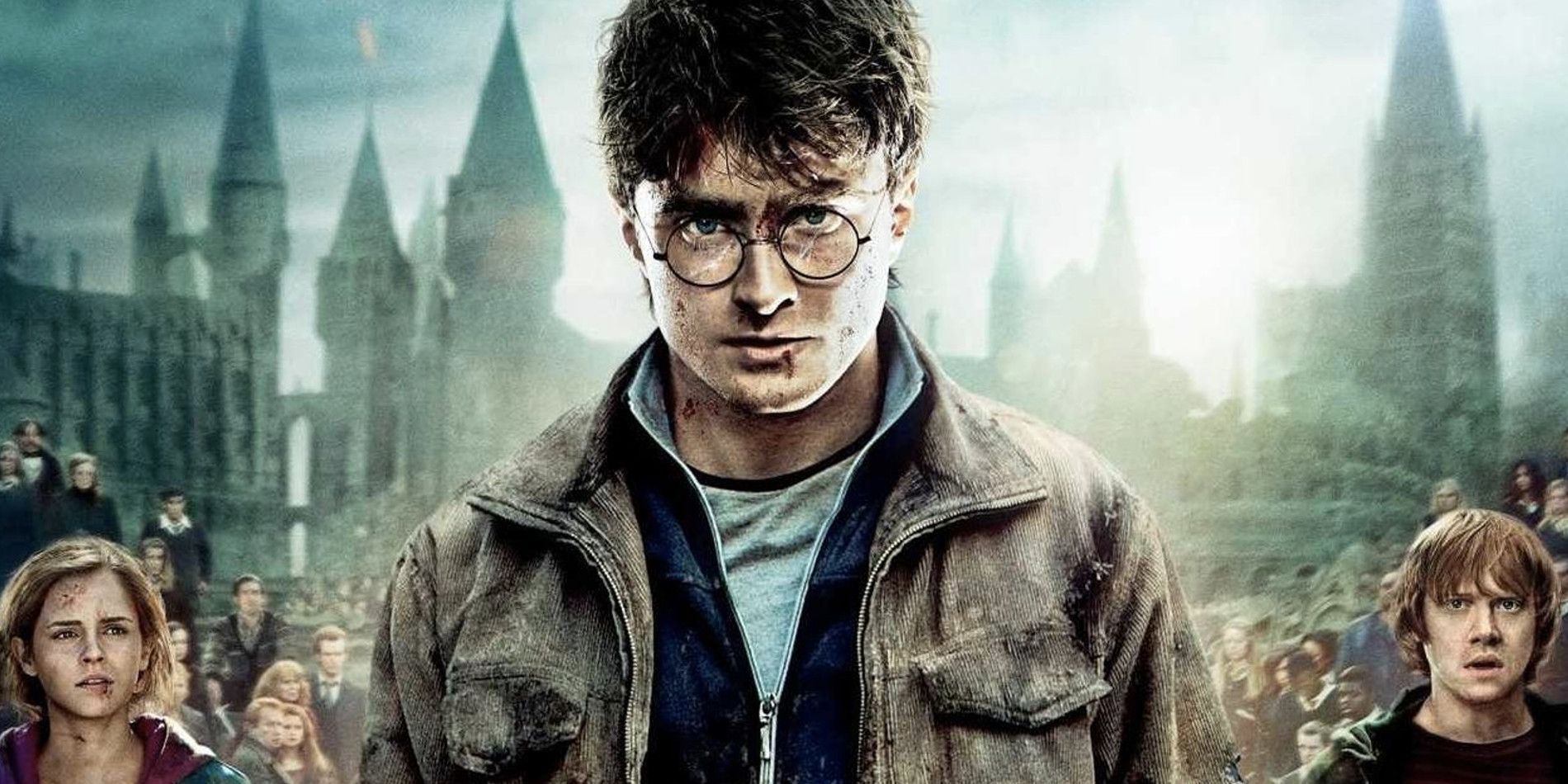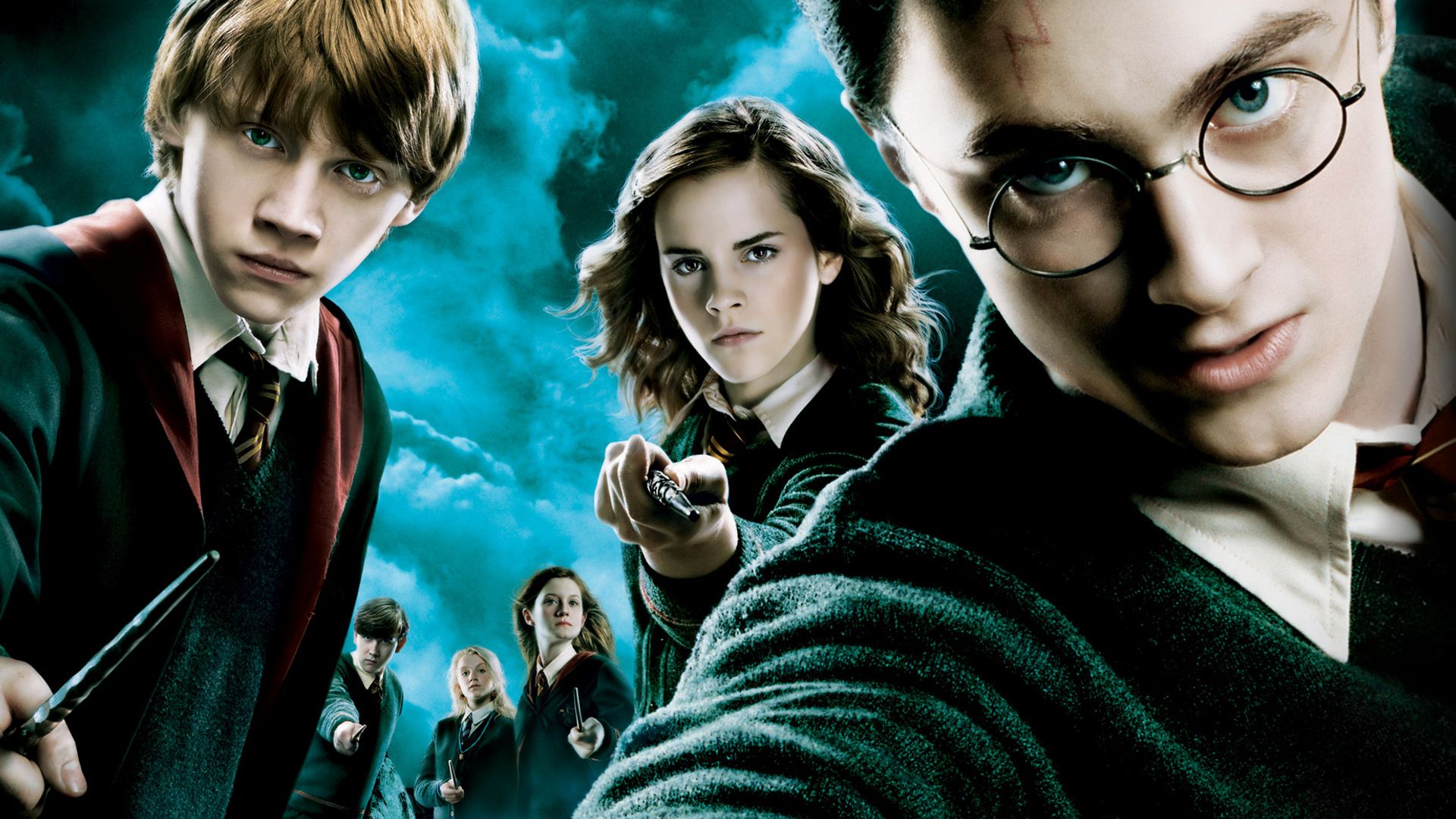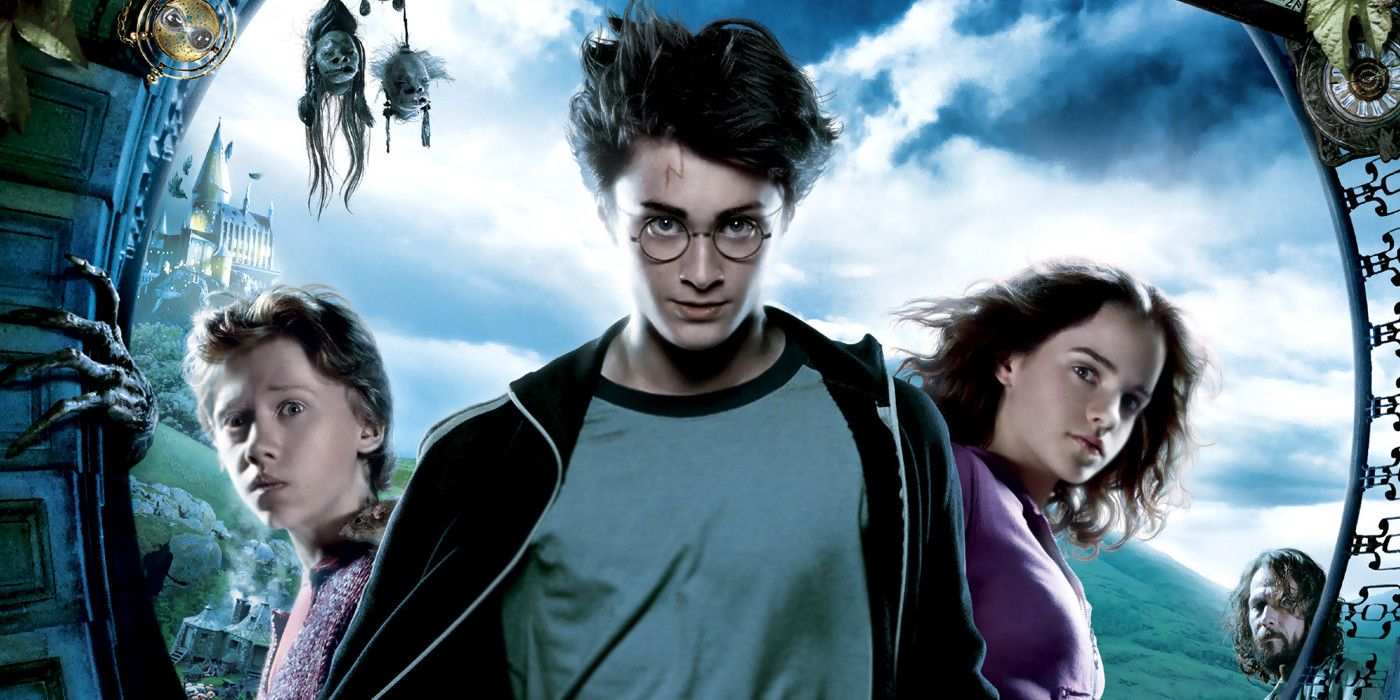Harry Potter first arrived in theaters fifteen years ago. Let that sink in a minute.
A significant amount of time has passed since we last saw The Boy Who Lived. Social media became a thing, the iPhone was built, three presidential elections have passed, and now a new J.K. Rowling story is headed back to cinemas. History repeats itself, and with Fantastic Beasts and Where to Find Them on the horizon, we thought it time to revisit the beloved Harry Potter series and give them the definitive ranking they deserve.
Given the baseline of excellence for every film, this is a formidable task. Is there really a “worst” film in Harry Potter lore? We shudder at the thought, yet upon closer examination, some entries are clearly stronger than others. Depending on your mood, you may opt for the magic of The Sorcerer’s Stone, or if you’re feeling particularly low, you may want to live in the existential crisis that is The Deathly Hallows, Part One.
Either way, we solemnly swear we are up to no good. Here is Every Harry Potter Movie, Ranked Worst to Best.
8. Harry Potter and the Deathly Hallows, Part 1
If The Deathly Hallows got the one-two punch treatment, then The Goblet of Fire also deserved two movies. The fundamental problem with Harry Potter and the Deathly Hallows, Part One is that it simply runs in circles for the vast majority of the film. We know that director David Yates and Warner Bros. saw a creative and financial opportunity in halving Rowling’s concluding book. That’s not the problem. No, the issue with the penultimate movie is that it literally acts like a self-aware set-up. That’s why there are countless moments of narrative stalling where “quality time” spent with Harry, Hermione and Ron ends up seeming lethargic and unmotivated. Sure, there is undoubtedly a great deal of confusion leading up to the final battle, but the interminable camping sequences and forest wandering really halted the flow of the plot.
After the emotional ending of The Half-Blood Prince, the first Deathly Hallows needed to reinvigorate its pace and plot, not get sucked into the doom-mongering of the long anticipated finale of Harry vs. Voldemort. At their best, Harry Potter movies are awe-inspiring, frightening and fun, but The Deathly Hallows was a fairly morose entry that turned its central characters into insecure props (see: Ron totally misreading Harry’s friendship with Hermione). Though there are no statistics to back the claim, it wouldn’t be surprising to learn that Harry Potter and the Deathly Hallows, Part One is the least revisited movie in the Hogwarts canon.
7. Harry Potter and the Goblet of Fire
There’s a lot to like in The Goblet of Fire, and had it been a five-hour long movie, it might have been a classic. Unfortunately, that’s an unrealistic expectation even for one of J.K. Rowling’s longest books. Indeed, adapting the mid-point epic in Harry’s journey would seem a suicide run for even the most ambitious director. After all, The Goblet of Fire is an important book not only for what happens in the story, but for what becomes of the characters. Though much has already happened at Hogwarts and beyond, Goblet represents the calm before the storm and the end of the innocence. As Hermione Granger opines, "Everything's going to change now, isn't it?"
After the air-tight film-making in Alfonso Cuaron’s The Prisoner of Azkaban, however, the follow-up felt like an hors d’oeuvre platter of delectable moments that never quite amounted to a full meal. From the Quidditch World Cup (of which we saw nothing) ,to the Triwizard Tournament, to the blooming romances of Harry and Cho Chang and the much-anticipated materialization of He Who Must Not Be Named, our cup runneth over with The Goblet of Fire. Despite the darker themes, the thrilling score from Patrick Doyle, and that gut-wrenching goodbye to Cedric Diggory, The Goblet of Fire remains a desultory and thinly-crafted movie designed to reach that Portkey punchline and give us the first taste of Harry VS. Voldemort. Surely the road to that graveyard ending could have been less messy.
6. Harry Potter and the Chamber of Secrets
Depending on your loyalty to the books, The Chamber of Secrets may rank among either your worst or least favorite films in the series. Though much may be said about the sophomore Potter story, few can criticize its fealty to J.K. Rowling’s book. By the same token, the cinematic flow of The Chamber of Secrets is stifled by that stolid faithfulness to the source material. Its primary asset, that the narrative takes place almost entirely in the bowels of Hogwarts, occasionally turn the movie into a slog. Exposition is at an all-time high in the story, hampering the pacing in scenes that may have been better to skip altogether. Like Hermione in class, The Chamber of Secrets crosses its T's and dots its I's, but it all seems a bit excessive at times.
That said, The Chamber of Secrets revels in the magical atmosphere. Director Chris Columbus doesn’t shy away from bold stabs at humor (we’re looking at you, Gilderoy Lockhart), and in certain moments, he delivers some of the most intense scenes otherwise reserved for teenage Harry. Really, what other PG-rated kid’s movie has a cryptic threat written in blood in a school hallway? Or a mystical journal that responds to your every word? Indeed, The Chamber of Secrets doubles down on the looming presence of Voldemort and doesn’t shy away from his danger.
5. Harry Potter and the Half-Blood Prince
For Harry Potter and friends, The Goblet of Fire represented the last joyous jaunt in the wizarding world. Then, The Order of the Phoenix arrived with a new director, a new composer, and an entirely unique tone not seen in the previous films. While movie number five may be the watershed event of the whole series, The Half-Blood Prince deserves respect for enhancing the themes that Order introduced. If it wasn’t the most thematically intense book in the series, it certainly came close. The Half-Blood Prince was an absolute page-turner with a devastating climax, a stunning reveal, and an enraging conclusion that left fans clamoring for revenge.
The movie adaptation succeeded in not only translating the story’s angst and rage, but in remembering the humor at the heart of the story. Juggling their own romantic trysts and vulnerable feelings, Ron and Hermione create a welcome diversion from Harry’s foreboding alliance with Dumbledore. That’s ultimately what The Half-Blood Prince becomes: a buddy cop adventure for two warlocks seeking to rid the world of evil. Thanks to Nicholas Hooper’s haunting score and the Academy Award-nominated cinematography from Bruno Delbonnel, The Half-Blood Prince further develops the dangerous world of Harry Potter and sets the series up for a rousing conclusion.
4. Harry Potter and the Sorcerer's Stone
Like many beloved fantasy series before and after it, Harry Potter could have left fans utterly disappointed. One misstep could have turned The Sorcerer’s Stone into Philip Pullman’s The Golden Compass, a massive financial write-off for the studio and the premature end of a great story. While the Potter films are far from perfect, their overarching success owes everything to director Chris Columbus’ brave maiden voyage to Hogwarts. Harry Potter and the Sorcerer’s Stone is not only a faithful adaptation of the book, but a wondrous depiction of J.K. Rowling’s robust, intricate and craggy universe.
From absolutely nailing the casting of the youthful triumvirate with Daniel Radcliffe, Rupert Grint and Emma Watson, to surrounding the fledgling child actors with veterans of the British theater, The Sorcerer’s Stone confidently welcomed viewers into its magical world. The opening scene alone cold-cocked viewers with such panache that it defied us to look away. Before we even arrived on Privet Drive, John Williams’ deeply evocative score swept us away. We take for granted his now legendary and hauntingly-chimed theme, but Williams’ ability to convey the tones of Harry Potter in a single flourish is a true contributor to the success of the series.
Ultimately, The Sorcerer's Stone is such an alluring film that it can hardly be watched without urging viewers to continue through the series. It established the legacy of The Boy Who Lived, prepared us for the impending battle against Voldemort, set up the traditions at Hogwarts, the majesty of Quidditch, and proved once and for all that we muggles would rather be wizards.
3. Harry Potter and the Deathly Hallows, Pt. 2
There’s something bittersweet about The Deathly Hallows, Part Two. Not only does is represent the end of Harry’s journey, and the relief of his lifelong burden to defeat Voldemort, but it marks the true end of an era. Gone are the Yule Balls, the Quidditch Cups, and the Honeydukes Express. In their place, these very young adults receive all manner of detestable creatures in the wizarding world. It’s a coming of age story of the most horrific kind, an unbridled tale of war set against bitter enemies with no desire for peace. At the Battle for Hogwarts, it’s kill or be killed, and the teaching staff, their students, and all of their combined magical powers are put to the ultimate test: Voldemort and the Death Eaters.
Though Harry Potter ultimately wins the day, director David Yates cements his role as the true guardian of the series. This grand finale could have been overdone in countless ways, yet Yates showed a surprising amount of restraint in depicting the defeat of the Dark Lord and his minions. From Molly Weasley to Neville Longbottom, everyone gets a taste of glory in The Deathly Hallows, Part 2, and it’s the team’s unification and ultimate victory that makes the movie so emotionally satisfying. Though the other films often ended with Harry, Ron and Hermione talking to one another, The Deathly Hallows concludes with the triumvirate standing together holding hands in silence, unable to speak.
2. Harry Potter and the Order of the Phoenix
The War and Peace of the Harry Potter books, The Order of the Phoenix added 870 pages to J.K. Rowling’s magical universe. Director David Yates didn’t take the bait, however, and focused the story on the bare essentials: Harry’s relationship with Sirius and the development of the resistance, to the mounting threat of Voldemort. The scope of the movie is massive, yet unlike The Goblet of Fire, it seldom feels rushed. Harry, Hermione and Ron operate with a great deal of autonomy, and The Order of the Phoenix showcases the undeniable strength of Hogwarts students in unity. The movie feels like a rebellion, and because the rise of Voldemort looms large over the story, it manages to stave off the sense of dread that creeps into The Half-Blood Prince.
Dolores Umbridge presented a welcome addition to Harry’s rogue gallery, the personification of Big Brother involvement in personal affairs. She embodied the political undertones inherent in the film, the bridge between the wizarding world and our own. She was a hateful, sadistic disciplinarian who apparently received a cruel comeuppance at the hands and hooves of the centaurs. Indeed, Umbridge gave the students a reason to rally before daring to enter the Ministry of Magic. While Sirius Black’s death was all too sudden, especially after his delicious coupe de grace against Lucius Malfoy, the battle scenes in those dark and dingy halls rank among the best in the series. Should anyone look back at the history of dueling wizards on screen, the hair-raising fight between Voldemort and Dumbledore will be one for the books.
1. Harry Potter and the Prisoner of Azkaban
Franchises live and die on the strength of each individual film’s director. Just look at James Bond or the original Superman series. When the Harry Potter team at Warner Bros. switched captains after two box office grand slams, they needed a new creative vision. Chris Columbus’ exit from the franchise threatened to destabilize the third movie, but it also presented the opportunity for an auteur director to re-brand the Harry Potter appeal. How perfect, then, that Alfonso Cuaron, the brilliant director behind Y Tu Mama Tambien and A Little Princess would be the one to usher Harry Potter and his friends into adolescence.
Cuaron initially came to the Potterverse with virgin eyes, having read the books only after being considered for the job. More of a convert than a die-hard fan, Cuaron adapted The Prisoner of Azkaban with carte blanche. Though a complex time-travel narrative, Azkaban has arguably the least expansive scope of the Harry Potter series, so Cuaron serviced the minimalist story while embellishing on the central characters. Before starting principal photography, Cuaron had Radcliffe, Grint, and Watson pen an essay from the perspective of their characters. Though he was the only one to skip the assignment, Rupert Grint stood his ground and argued, “I’m Ron. Ron wouldn’t do it.” Cuaron accepted Grint’s logic and knew the boy had a firm grasp on his character. Though the book hardly touched on his feelings with Hermione, Cuaron amplified their budding romance and laid the groundwork for their future.
The Prisoner of Azkaban often seems like the black swan of the series, but Cuaron’s artistic eye and aesthetic set the standard that Mike Newell and David Yates would later continue. By taking the plunge into firmly angsty territory, and allowing Harry himself to feel the insecurity and rage of adolescence, Cuaron turned The Prisoner of Azkaban into a standalone film that transcended the Potterverse and set the table for its grand conclusion.
---
How do you rank the Harry Potter movies? Let us know in the comments below!

